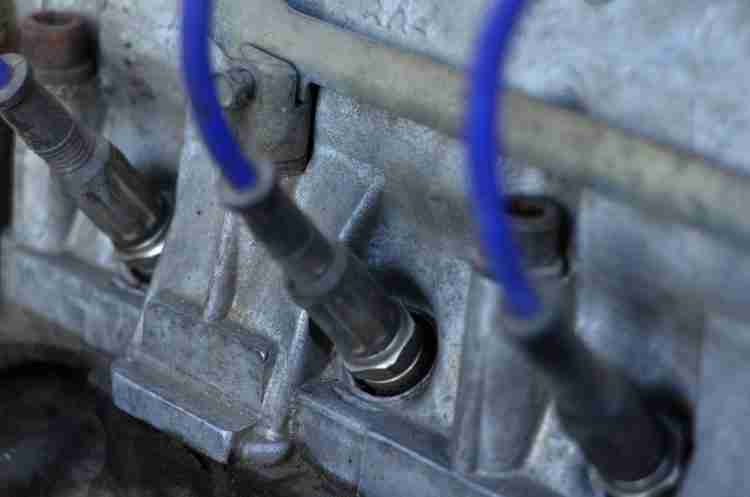Symptoms of Bad Spark Plug Wires

Symptoms of Bad Spark Plug Wires
Spark plug wires, also known as ignition cables, are a critical component of a vehicle’s electrical ignition system. They do an excellent job transporting sparks from the vehicle’s ignition system to its engine spark plugs.
Because of their critical role, it is most certainly that they will adversely affect the engine’s performance should they fail to transfer the sparks required for the engine to operate optimally.
Although they are manufactured with low-resistance, durable materials to withstand extreme temperatures under the hood, engine chemicals, and electrical stress, ignition cables won’t last forever. So, whether you’re doing a complete tune-up or are changing the spark plugs, you should always check your spark plug wires to identify possible imperfections.
But how do you know failing spark plug wires? This post will discuss the symptoms of bad plug wires to help know when to change them. Read on.
Spark plug wires: What do they do?
Essentially, spark plug wires are components in the spark ignition systems that transfer high voltage pulses from the distributor (voltage source) to spark plugs. They have a handful of elements, including a central conductor, a distributor terminal, insulating terminal bolts, and external sheath, which ensure it works properly.
The conductive wires supply the spark plugs with the required voltage jolt of electricity from the ignition coil for ignition to occur. That said, they must be in perfect condition for your car’s engine to function optimally.
When spark plug wires are defective, they cause engine problems, meaning replacing them should improve performance, bringing the car to life.
Signs and symptoms of bad spark plug wires
Spark plug wires play an indispensable role in your vehicle’s electrical system. When they start failing, you will notice a number of engine-related problems.
Here are symptoms of lousy spark plug wires.
1. Rough engine idling
Normally, a vehicle should have a smooth and steady idle.
Spark plugs wires transmit electrical current from your vehicle’s electrical system to the engine’s spark plugs, where the current ignites the air-fuel mixture in the engine’s combustion chamber. When the spark plug wires get faulty, ignition will not happen properly, causing rough, erratic engine idling.
Notably, rough idling can be caused by a multitude of other factors, including a bad ignition coil. So, before changing your ignition cables, make sure they are the culprit.
2. Hard starts
Hard start means your car takes longer than necessary to ignite. While this problem is often caused by a problematic battery, it can also be a tell-tale sign of a bad spark plug wire. Indeed, faulty ignition cables drain the battery, which stops the engine from picking up.
If you experience hard starts and are certain that your battery is not the issue, it is time to replace the spark plug wires.
3. Engine misfiring
Caused by erratic or incomplete engine combustion, engine misfiring is a common symptom of bad spark plug wires that no driver would ever want to experience. Unfortunately, every vehicle seems to experience this problem at one point in its lifetime.
As spark plug wires usually transmit sparks at predetermined intervals, a faulty ignition cable will cause the current to flow erratically, alternating periods of normals flow with periods of erratic flow. This results in incomplete combustion in the engine’s chamber, causing engine misfiring.
4. Engine surging
Engine surging is another common symptom of bad spark plug wires. It happens when there are cracks and breaks in the outside of insulation wires. The cracks cause the electricity to face considerable resistance, which leads to short spurts of adequate electrical flow to your car’s spark plugs or reduces current flow to nonexistent.
When you notice engine surging issues, replacing the faulty spark plug wires will get your car back on the road.
5. Engine hesitation
Engine hesitation results from inadequate or irregular electrical current flow to the engine, and, in many cases, it happens during acceleration. Bad spark plug wires, whether due to internal degradation, cracks, or breaks in their outer cover, disrupt electrical conduction to the spark plugs, ultimately causing your engine to hesitate.
Notable, engine hesitation can also be caused by abnormal fuel flow.
6. Reduced engine power
Undeteriorated electrical conduction to engine spark plugs is needed to ensure undisrupted engine combustion and proper engine power. This means abnormalities on the spark plug wires can alter the combustion process, causing significant power loss.
That said, reduced engine power could indicate that your car’s spark plug wires are not in good condition – lousy ignition cables impede regular current flow.
7. Slow acceleration and reduced gas mileage
Poor acceleration and reduced gas mileage are other tell-tale signs of bad spark plug wires. When the ignition cables of your car fail, the car loses its acceleration power, and you end up using more fuel.
Although there are other poor fuel economy culprits, the condition is worrisome and can be frustrating. The only solution is to have your spark plug wires replaced.
8. Knock-like noises
Engine knocking is a classic symptom of bad spark plug wires and, if not addressed urgently, can cause severe mechanical damage. The noises you hear come from the pistons, which indicates delayed or incomplete combustions. So, before jumping to a conclusion, inspect your ignition cables to ensure they are not the issue.
9. Vehicle engine light
Modern cars come with built-in sensors that send signals reporting potential issues, including the conditions of your engine and other factors that affect your car’s performance. That said, if the Check Engine Light of your car comes on, it may be indicating that you have a faulty ignition cable.
Bad spark plug wires can cause engine misfiring or other performance issues, setting on the engine light.
10. Visible damage on cables
Ignition cables are constantly exposed to wear and tear and extreme conditions under the hood. That said, any visible damage (cracks and wear) on the exterior sheath of your wires can imply that they are faulty.
Conclusion
Spark plug wires are essential components that directly affect the engine’s performance. When they are faulty, your engine will not function optimally. Well, while these essential cables are made from durable materials for longevity, the above-listed symptoms mark the end times of your spark plug wires, meaning you will need to replace them should you see any of the symptoms.













No Comment